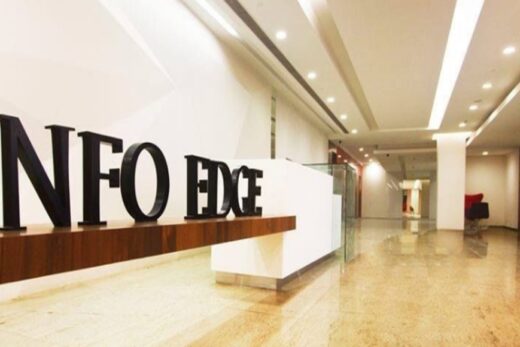It is the biggest correction that we have seen in six months. What do you make of it?
This is the first big correction that we are seeing in this bull market that has been on for the last 20 months. It has been one of the most furious bull markets that we have experienced in a very long time. For quite some time now, many people on the Street were anticipating or expecting a correction because there was a high order of retail euphoria all across the markets. I would like to think that from a medium term perspective, this is a very healthy correction.
Once this correction settles down, that should be an opportunity for investors to step in from a medium term perspective. I do not think anything has changed from the point of view of the outlook on the markets from the one year or two year time horizon.
You are also calling this the first big correction in the bull market. Would you use it as an opportunity to buy?
Yes, certainly so. We were actually sitting on some cash which we have created over the last few months and we would like to dip into these markets in probably a few days or weeks once this correction settles down. We remain quite optimistic on the outlook for the Indian economy going into the next year which should be the first normalised year in the post Covid world for the Indian economy.
We remain very positive on sectors which are essentially investment led. We are very positive on India’s investment cycle and the revival of capex because we are already seeing some of very large industrial companies announcing very meaningful investment plans.
Also, we are extremely positive on consumer discretionary because we think as the economy opens up and jobs get created, we will see strong growth in discretionary spends from consumers over the next few years. So these are some of the sectors that we are looking forward to buy into.
From Rs 300 odd levels all the way to Rs 735 where we are currently at in Bharti, isn’t a higher ARPU already in the price? Would you buy at Rs 700 plus levels afresh?
We have spoken about this quite some time back. I firmly believe that the telecom sector is in a structural growth framework in India. For me, telecom as a sector is a buy, not from the next six months or one year perspective, but from the next 10 year’s perspective. This is an industry, where we had 10 players and a market which was completely fragmented. From there, we are down to a situation where it has become an oligopoly kind of a market with three odd players and a government run player.
Whenever any industry goes through these kinds of transition, we see a return of strong pricing power. This is what Bharati has done today by exercising that pricing power. I think the pricing power in the telecom industry is here to stay for a very long time. Telecom as a sector, Bharti as a stock is a buy from not only from a short term perspective, but from a much longer term perspective as well.
What is your strategy when it comes to Reliance? It is trading below Rs 2400 now. What is the trigger to watch out for?
We do not take a short term view on any stock or business for that matter so I am not really sure about what happens on the stock over the next one month or so. From a longer term perspective, we remain positive on Reliance because our base is extremely positive on telecom as a sector and now Jio has emerged as the largest telecom player in India. Apart from that ,its other growth engines including retail and the internet businesses are firing very well. A slightly more medium to longer term view on the stock remains very positive. There could be a short term correction in the stock because of the news flow around the deal with Saudi Aramco not going through.
What is your opinion on the entire BNPL/Fintech universe and how is it shaping up? Given the backdrop of the underperformance from banks at large, how are you positioning yourself within the Nifty Bank components right now?
We remain very positive on this whole microcredit sector including the BNPL that is evolving in India. Currently the aggregate BNPL outstanding of credit in India is very small, roughly about $2.5 billion but we think that will grow at about 50% CAGR for the next seven-eight years and should probably become 5- 7% of the overall bank business in a year in India. The opportunity is huge; it is all about the ability to execute — because they are giving very small ticket size of loans of 10,000 or 20,000 or 50,000 — and the ability to recover or do the collections efficiently, because in the case of customer default, it is not possible to pursue the customer and recover the money.
I firmly think that if not all, but some of the banks will certainly have a significant play in the segment because banks have invested significantly into their technology backbone and architecture over the last few years and they have caught up with a lot of new generation fintechs very well. I think traditional banks are going to compete very fiercely.
The largest state owned bank in India, State Bank of India, through its app has been doing an amazing amount of work on their personal loans. So, the banks are catching up and they want to give a run for the money to a lot of these
players. Overall I think there is a huge opportunity in this space and Indian banks will capture that.
From an overall banking sector perspective, we will continue to retain our positive bias on private sector banks because as credit growth picks up next year, both from consumer borrowing and corporate borrowing as the capex cycles gets into place, banks will get growth trajectory back which has not been the case for the last 18 months because the credit offtake has been pretty low post pandemic. ALl that will change next year.
What stocks are you going to buy in the current decline which is taking place?
We will look at some of these internet companies very closely. The valuations in some cases are outrageous but from a growth opportunity perspective, it is a secular growth opportunity over the next 10-15 years because it is very apparent now that India has the second largest smartphone user base in the world and we are just opening our internet economy. So, that space looks very exciting from a growth perspective though valuations remain extremely demanding.
Apart from that we are extremely positive on the capital goods space because we are seeing very concrete signs of revival in the investment cycle. We are already seeing some of the large companies like Tata Steel or Hindalco or
making significant announcements for capex over the next three years, five years and so on.
India’s investment cycle, which has been missing for almost a decade now, will get back going forward next year and this could be a cycle which could be in for the next decade. We like the capital goods space from the next 10 years’ perspective.



